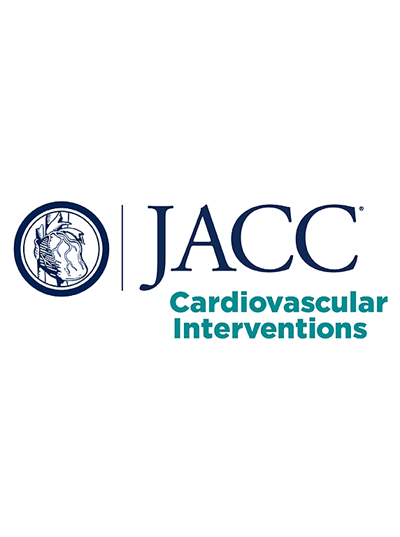Acceleration Time/Ejection Time Ratio Compared to Mean Gradient as a Predictor of Clinical Outcomes Post-TAVR
IF 11.4
1区 医学
Q1 CARDIAC & CARDIOVASCULAR SYSTEMS
引用次数: 0
Abstract
Background
Transcatheter aortic valve replacement (TAVR) is a significant treatment option for patients with severe aortic stenosis. Aortic valve (AV) mean gradient (MG) is frequently used to assess prosthetic valve function. Although MG is a helpful measure of valve performance, it depends on cardiac output and pressure recovery, which can be important confounders.
Objectives
The aims of this study were to explore TAVR valve hemodynamic status using the acceleration time (AT)/ejection time (ET) ratio and to compare AT/ET and MG correlations with post-TAVR clinical outcomes.
Methods
This retrospective cohort study involves patients >18 years of age undergoing TAVR between 2016 and 2020. AV AT/ET was measured within 3 months post-TAVR. A total of 1,900 patients were classified into 2 groups: those with AV AT/ET ≥ 0.35 and those with AV AT/ET < 0.35. Baseline characteristics, echocardiographic measurements, heart failure hospitalization (HFH), and mortality were assessed between the groups.
Results
AT/ET ≥ 0.35 was associated with an increase in 1-year HFH (P < 0.001 at 1 year) and was not associated with mortality. Patients with AV MG >20 mm Hg had comparable 1-year HFH (P = 0.46 at 1 year) and mortality compared with those with AV MG <20 mm Hg. More patients with self-expanding valves (23.2%) had AT/ET ≥0.35 than those who received balloon-expandable valves (12.7%) (P = 0.001).
Conclusions
Post-TAVR AT/ET ≥0.35 can potentially predict clinical outcomes such as HFH. AT/ET may explain the discrepancy between self-expanding and balloon-expandable valves in measured hemodynamic status and outcomes.
加速时间/射血时间比比较平均梯度作为tavr后临床结果的预测因子
背景:经导管主动脉瓣置换术(TAVR)是严重主动脉瓣狭窄患者的重要治疗选择。主动脉瓣(AV)平均梯度(MG)常用于评估人工瓣膜功能。虽然MG是衡量瓣膜性能的有用指标,但它取决于心输出量和压力恢复,这可能是重要的混杂因素。目的通过加速时间(AT)/射血时间(ET)比值探讨TAVR瓣膜血流动力学状态,并比较AT/ET和MG与TAVR后临床结果的相关性。方法本回顾性队列研究纳入2016年至2020年期间接受TAVR的18岁患者。在tavr后3个月内测量AV AT/ET。将1900例患者分为AV AT/ET≥0.35组和AV AT/ET <; 0.35组。评估两组患者的基线特征、超声心动图测量、心力衰竭住院率(HFH)和死亡率。结果sat /ET≥0.35与1年HFH升高相关(1年P <; 0.001),与死亡率无关。房颤MG >; 20mm Hg患者的1年HFH(1年时P = 0.46)和死亡率与房颤MG <; 20mm Hg患者相当。自膨胀瓣膜患者(23.2%)at /ET≥0.35的比例高于接受球囊膨胀瓣膜患者(12.7%)(P = 0.001)。结论tavr后AT/ET≥0.35可潜在预测HFH等临床结局。AT/ET可以解释自膨胀阀和球囊膨胀阀在测量血流动力学状态和结果上的差异。
本文章由计算机程序翻译,如有差异,请以英文原文为准。
求助全文
约1分钟内获得全文
求助全文
来源期刊

JACC. Cardiovascular interventions
CARDIAC & CARDIOVASCULAR SYSTEMS-
CiteScore
11.60
自引率
8.80%
发文量
756
审稿时长
4-8 weeks
期刊介绍:
JACC: Cardiovascular Interventions is a specialist journal launched by the Journal of the American College of Cardiology (JACC). It covers the entire field of interventional cardiovascular medicine, including cardiac, peripheral, and cerebrovascular interventions. The journal publishes studies that will impact the practice of interventional cardiovascular medicine, including clinical trials, experimental studies, and in-depth discussions by respected experts. To enhance visual understanding, the journal is published both in print and electronically, utilizing the latest technologies.
 求助内容:
求助内容: 应助结果提醒方式:
应助结果提醒方式:


